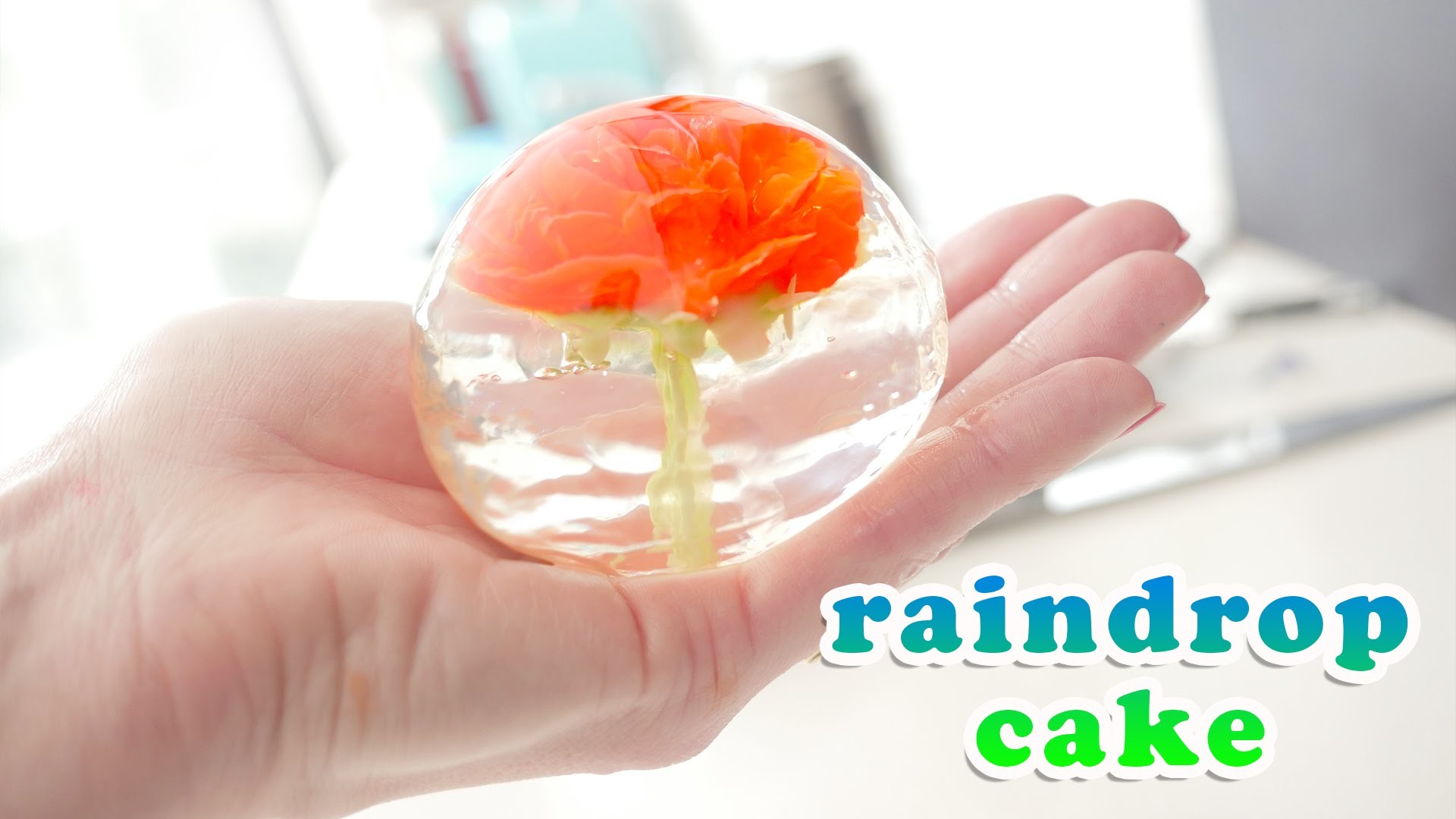
The results of playing with this gelatin dessert bring refined, innovative, and eccentric beauty to the culinary world. The fame it gained abroad seems to have added fuel to the fire of mizu shingen mochi in its country of origin, as the spread of the English nickname “raindrop cake” ( reindoroppu ke-ki by the Japanese spelling) seems to point out. The unique, transparent look of the Japanese raindrop cake gives creative chefs and amateurs alike plenty to play with, making this delicacy an exciting form of jelly art. Defining the taste is also a challenge and the most common attempt to explain it is “water-like.” Like a droplet of dew, it may not be satiating, but what a dreamy experience! It slightly depends on the recipe, but in general, raindrop cakes are less thick than jelly and melt in the mouth quite quickly. Yet, the most alluring features of this sweet are no doubt its texture and surreal appearance. The roasted, peanut-y flavor on one hand and the sweet, intense taste of the syrup on the other hand, combined with the refreshing quality of the Japanese raindrop cake, makes for a killer summertime dessert. This round-shaped gelatin dessert was originally served with kinako (roasted soybean powder) and kuromitsu (black sugar syrup) on a takeaway boat plate.

What is a Japanese Raindrop Cake (Mizu Shingen Mochi)? Its wobbly, see-through texture still sparks people’s imaginations thanks to all the dazzling variations on the dessert that still circulate the internet. The calorie-free peace of heaven sold out and went viral. took off only two years later, when Chef Darren Wong brought it from Japan to debut at the Brooklyn Smorgarsburg. How can a dessert made of almost 99.Mizu shingen mochi, the so-called Japanese raindrop cake, took Japan by storm in 2014, but its path to celebrity in the U.S. When I first saw these raindrop cake (which in my opinion it is not a cake per say, cake in my view should contain flour or its substitutes) I was fascinated by its shape and the notion of its pureness…upon reading the ingredients, I immediately could imagine its textures as I had worked with agar-agar, both in the kitchen and in the lab.

The trick is to have the right ratio of water and agar-agar to achieve a very soft almost running gel. Therefore the amount of agar-agar is very critical.Īfter searching through the internet I found that the ratio of agar-agar to water varied from 0.25% to 3% meaning that in 1 cup (250ml) of water the amount of agar-agar varied from 0.625g to 7.5g…yes, you read it right…so here is where my “experiments” started… A little extra of agar-agar the “cake” will turn into a flavorless jelly, a little “too little” and the “cake” will not hold its shape.

I started with the percentage that I used to use when working in the microbiology lab, 1.5%…then went down drastically since it gave me a jelly ball so hard that I could almost throw on the floor and it would bounce back. I taper down to 0.5%, then to 0.25% (not bad) but wanted to push lower and went to 0.1% which the gel barely set…finally decided to add a bit more and went for 0.2%. Yes, it did work! My notes reminded me of my lab notebook with all the calculations since I was varying the amount of water as well. The nice thing is that you are literally playing with water… As a result of all these “experiments” I just can tell you that you have to do your own “experiment” since the consistency will depend entirely on the quality of the agar-agar you use.


 0 kommentar(er)
0 kommentar(er)
